

Langharne

the estuary at low tide
Although Laugharne is dominated by the Tāf estuary. the much smaller Corran river runs though the township and was probably originally know as Abercorran (mouth of the river Corran), though Talacharn had also been used in early references.
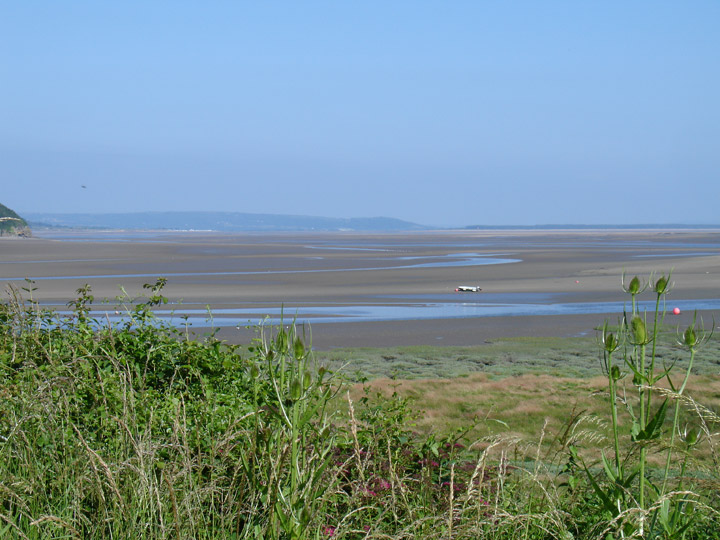
small boat, high and dry at low tide
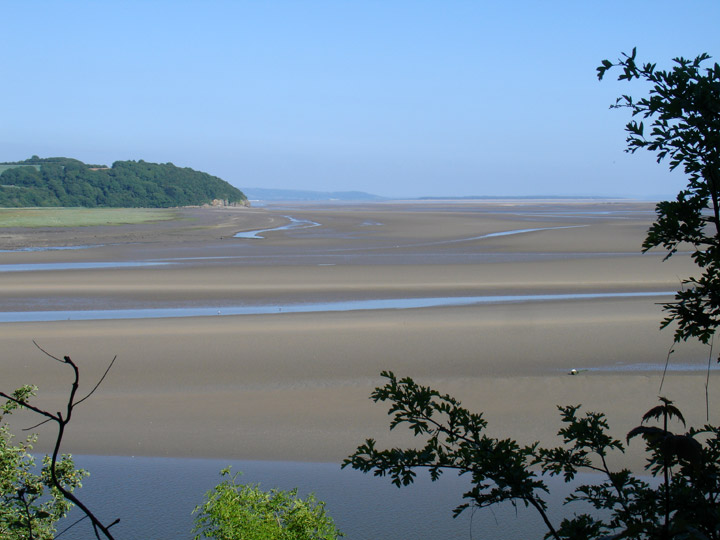
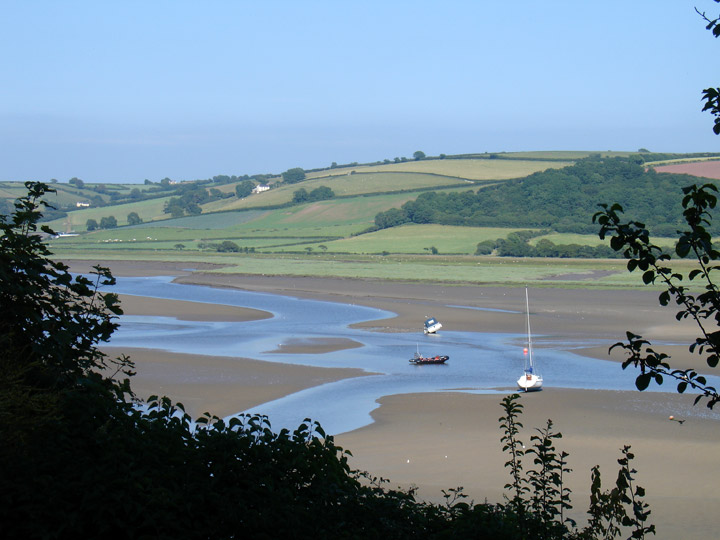
The earliest indications of human habitation in the area are the Beaker graves of Bronze Age times. which were found at Orchard Park and Coygan.
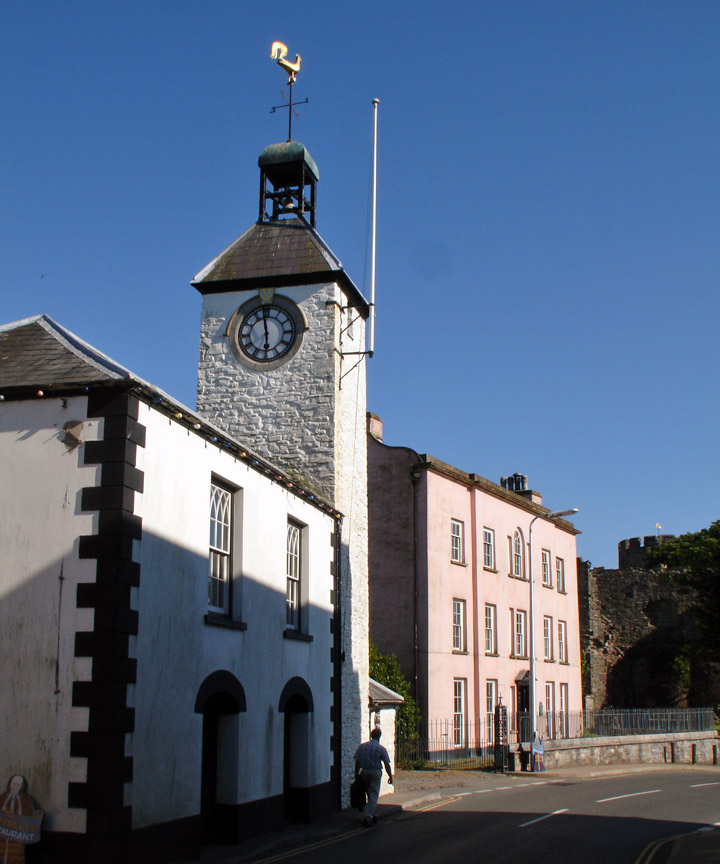
Traces of roman pottery have been uncovered during archaeological excavations at
Glan-y-mor and the castle, given there was a Roman fort at Carmarthen some Roman
contact was likely.
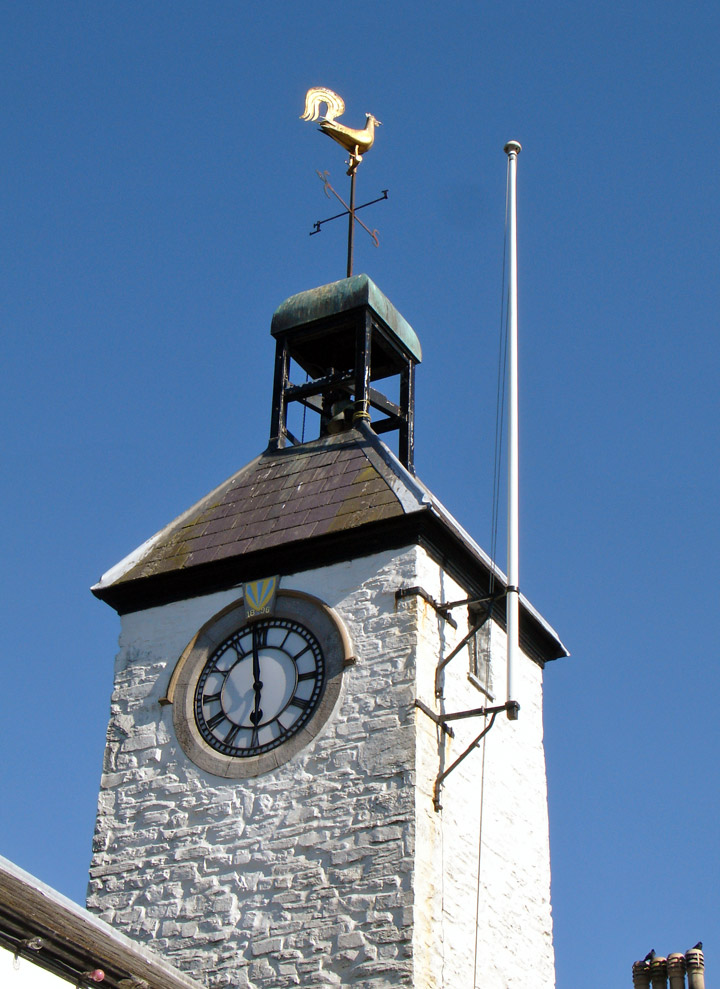
The Normans certainly left there mark on Laugharne in the form of a castle. one
of a series that was built at strategic spots along South Wales. More
importantly for Laugharne its castle formed part of the Landsker line stretching
across the southern half of Pembrokeshire. made up of Roch, Wiston, Haverford,
Llawhaden. Narbeth and Laugharne. This influenced the language and architecture
of the township which is English speaking in a predominantly welsh sneaking part
of Wales.

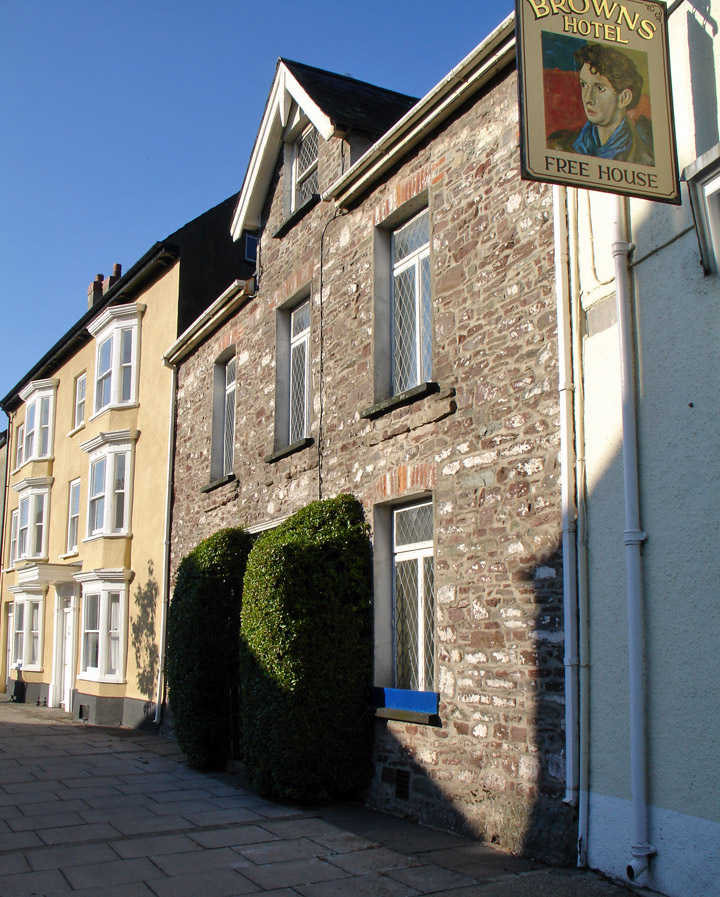
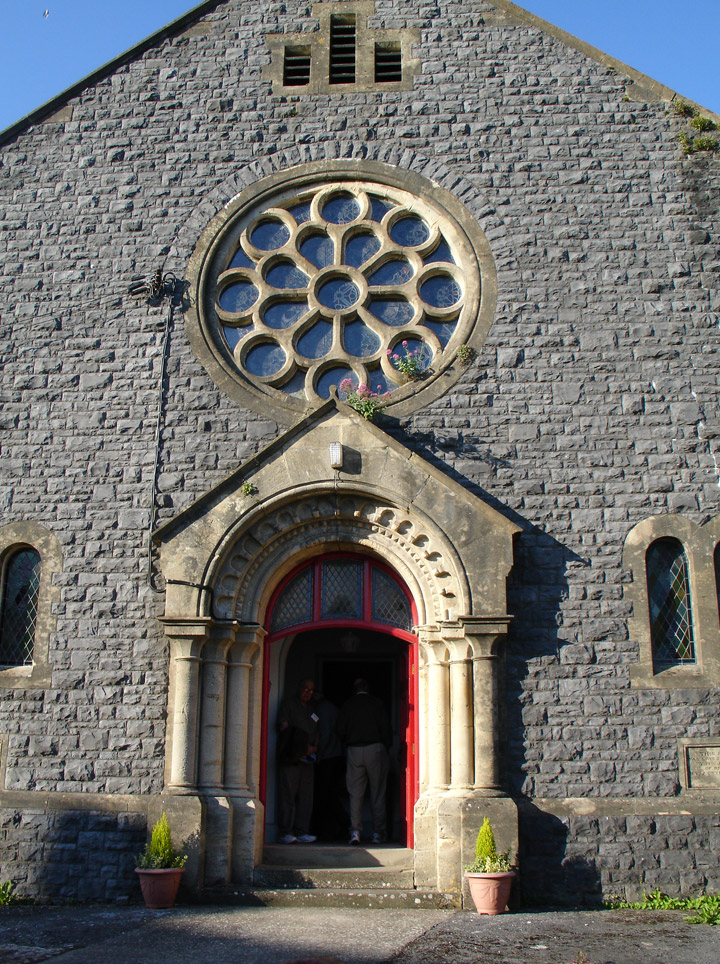
Chapel in King Street

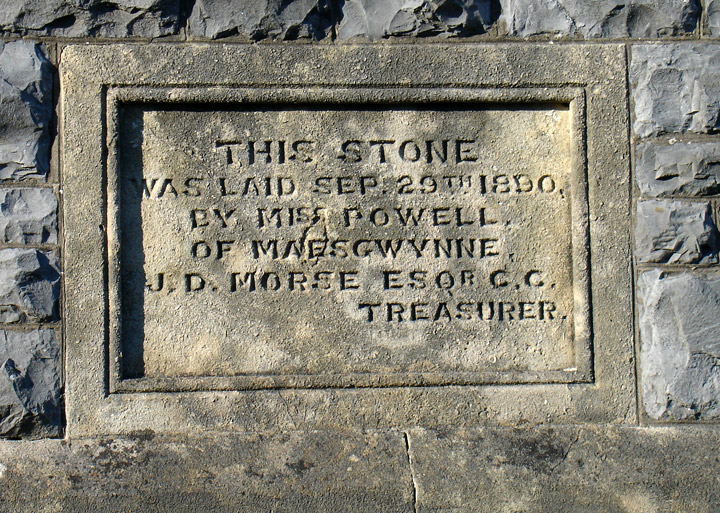
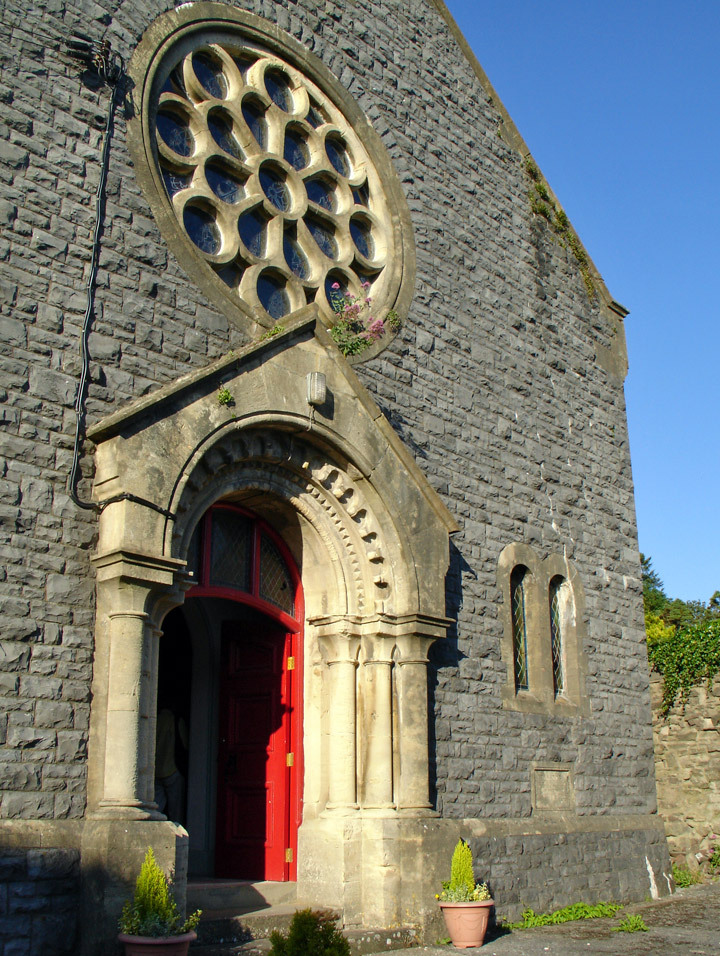
In 1291, Sir Guy de Brian created a Corporation in Laugharne. which was
administered by a portreeve and his court of aldermen and burgesses The term
portreeve is derived from the Saxon word for market town Port and Gerefa meaning
official. Dating back to 820 AD, the office is the only one now held by Act of
Parliament although the office still exists in another eight towns in England.
The chief duty of a Saxon Portreeve was to represent the King in legal
transactions and he was often the only person who could read and write,
especially when all legal documents were in Latin.
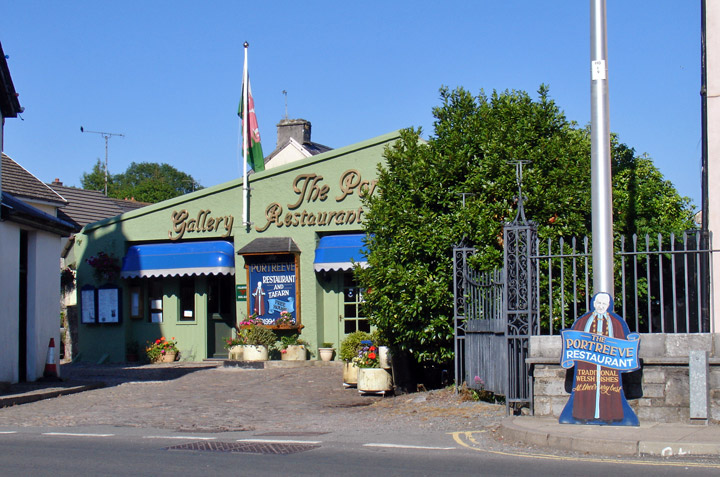
Portreeve Restaurant
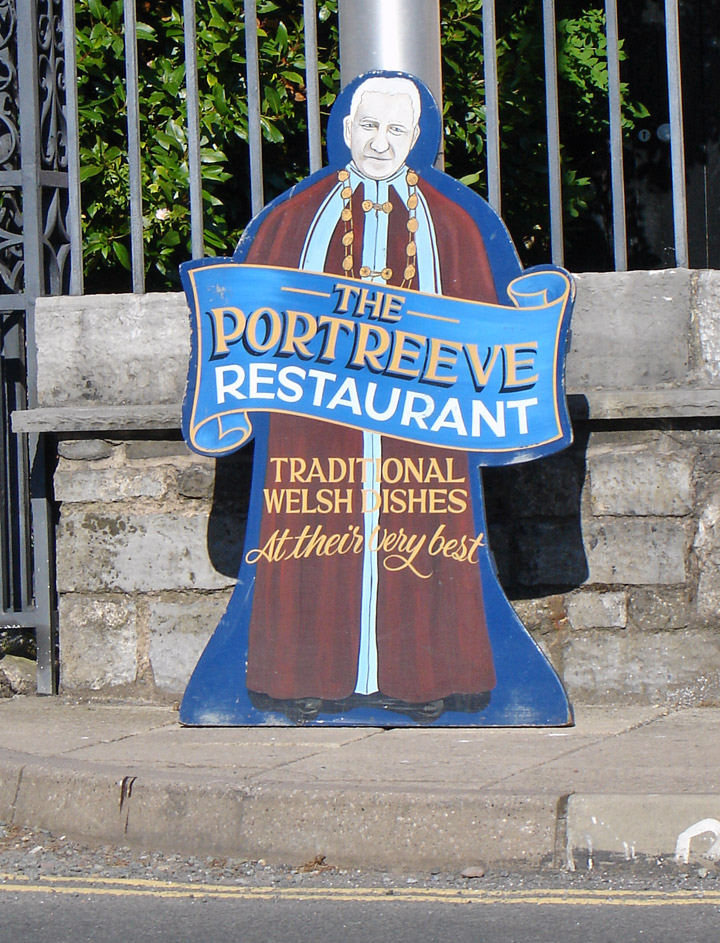
the Portreeve costume
The Corporation is still in operation to this date. with court meeting every two
weeks. The most senior 76 burgesses get a strang of land on Hugden for
life, to be used in a form of mediaeval strip farming. The title of Portreeve is
conferred annually, with the Portreeve being sworn in on the first Monday after
Michaelmas at the Big Court. The Portreeves chain of office is made up of solid
gold cockle shells, one added by each portreeve. with his name and date of
tenure on the reverse. Another custom associated with the Corporation is the
Common Walk (also known as beating the bounds). which occurs on Whit Monday
every three years. This involves a sizable proportion of the local population
walking around the boundaries of Laugharne Corporation as detailed in the
charter of 1291. At strategic spots. someone is chosen and if they are unable to
name the location, they are turned upside down and ceremonially beaten three
times on the backside, in an effort to get the local population to be familiar
with the boundaries of Laugharne I presume. Laugharne has had a long association
with the cockle industry. the cockles being harvested from the estuary mud
flats. A cockle factory once stood where there are now gardens beside the
Strand.
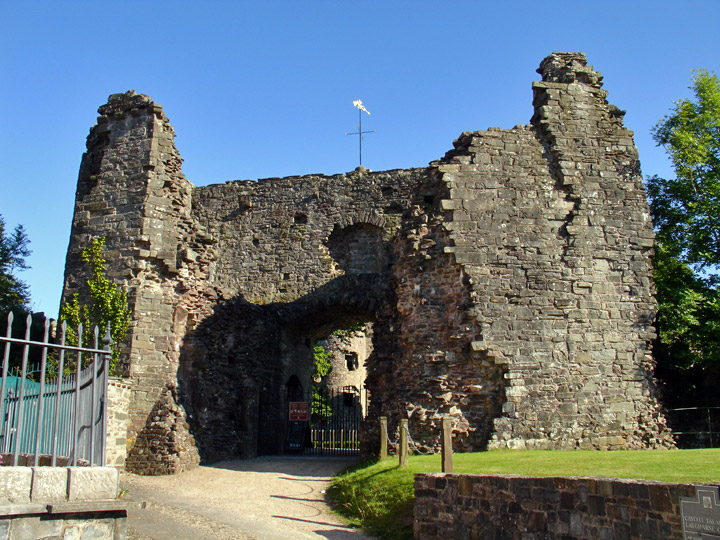
The Castle
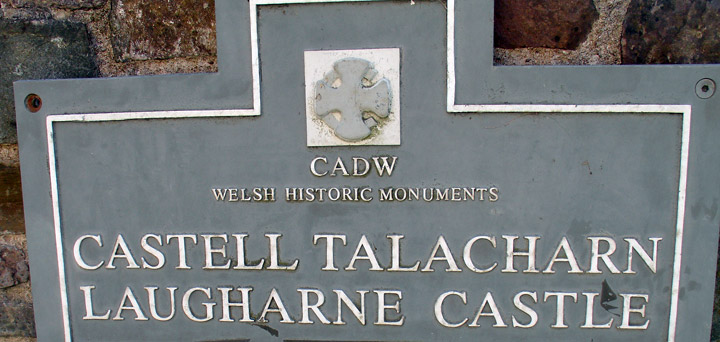
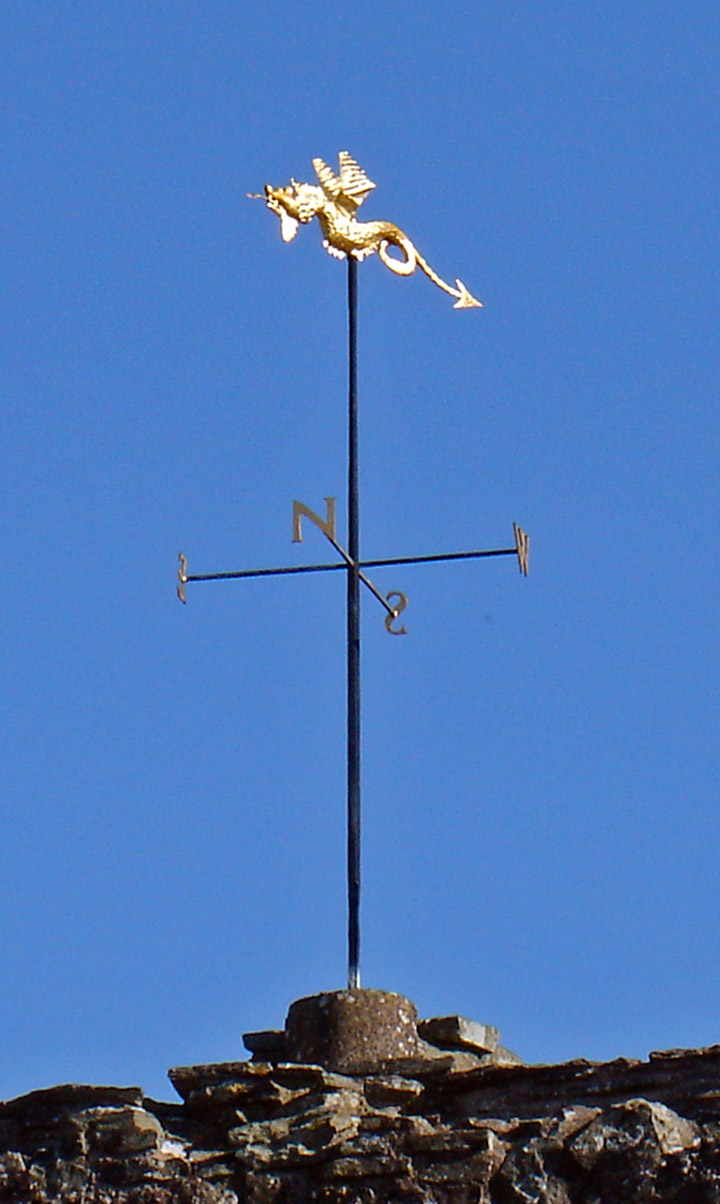
the castle weathervane
A castle is likely to have been built in Laugharne by the early 12 th century. The existing castle can only he traced to the de Brian family who then owned the lordship of Laugharne in the late 13th century.
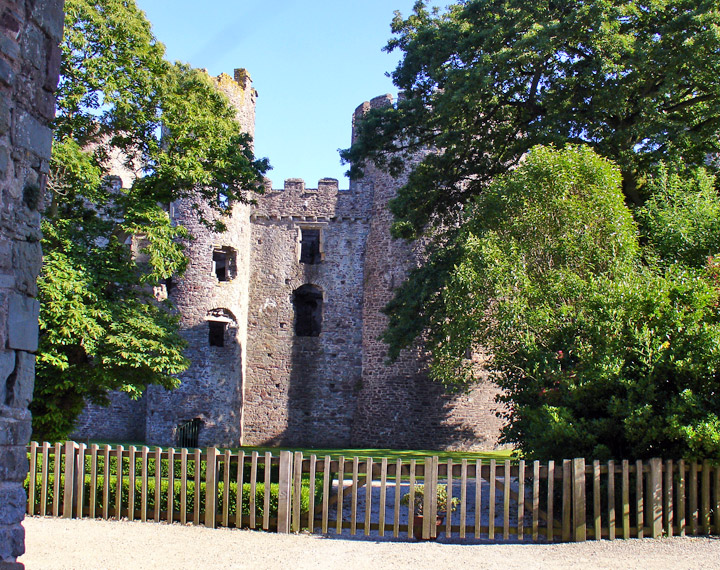
In 1488 the earls of Northumberland took over the ownership of the lordship and
castle from the de Brians. In 1584. Elizabeth I granted Laugharne to Sir John
Perrott. said to have been the illegitimate son of Henry VIII.

King Henry II visited Laugharne in 1172. King Street named in honor of his
visit. His visit was to conduct negotiations with Lord Rhys, who controlled much
of West Wales getting him to acknowledge his client status to the English Crown.
this probably occurred at the castle.

Laugharne may he the castle mentioned in about 1116 as the castle of Robert
Courtemain, but the first definite reference to the Norman castle is in 1189
when after the death of King Henry II, it was seized by the Lord Rhys. prince of
Deheubarth. It attracted further hostility from the Welsh in l257 when it
was destroyed by Llywelyn the Great and later, in 1257. when it was again taken
and burnt.
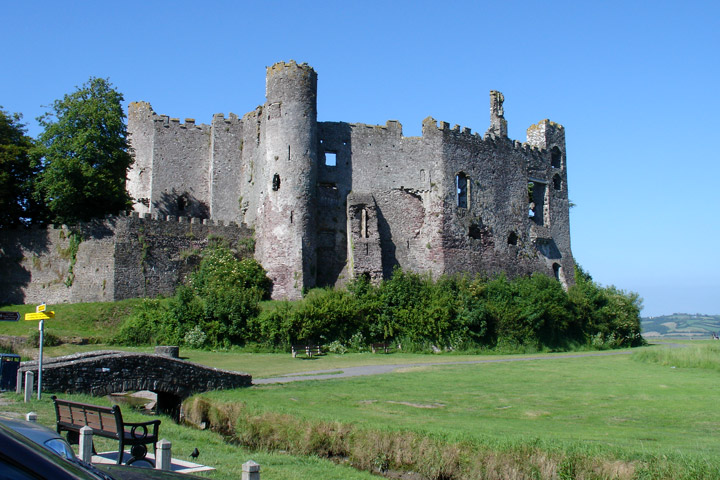
During the Civil War, Laugharne was captured by Royalists in 1644. but was
quickly re-taken by besieging Roundheads. The castle was partially destroyed
soon afterwards and gradually fell into decay.

In Elizabethan times Laugharne was considered quite large with over 90 houses.
It was one of the six most important towns in Wales. far bigger than Cardiff and
Lianelli. but things changed soon after the industrial revolution.

Flemish weavers settled in the lower part of the town during the 17th century.
they possibly had a connection to the old cloth mill at the Lacques. Fishing and
cockling were also major sources of livelihood for the township.
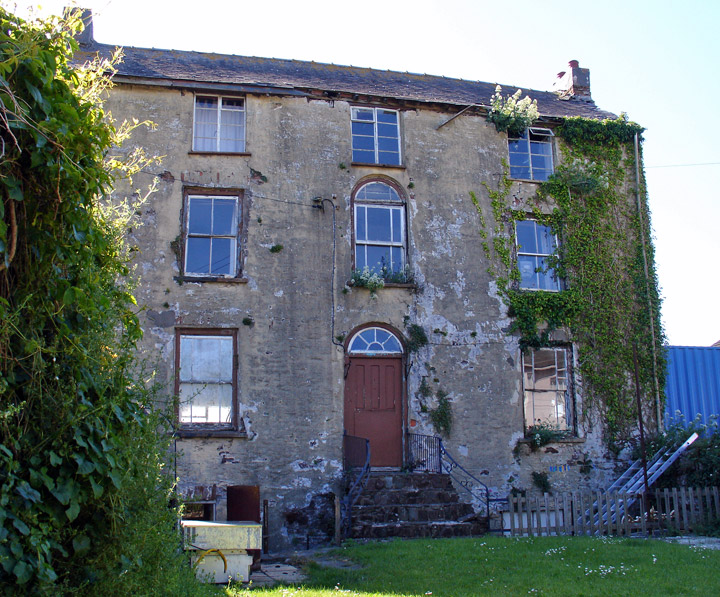
needs restoration
Before improved transport communications, Laugharne had been a thriving port. with trade to and from Bristol. At one stage Laugharne is reputed to have had 57 pubs and ale houses catering for the traders. mariners and fishermen. many of the houses in Laugharne still bear the names of these drinking places.
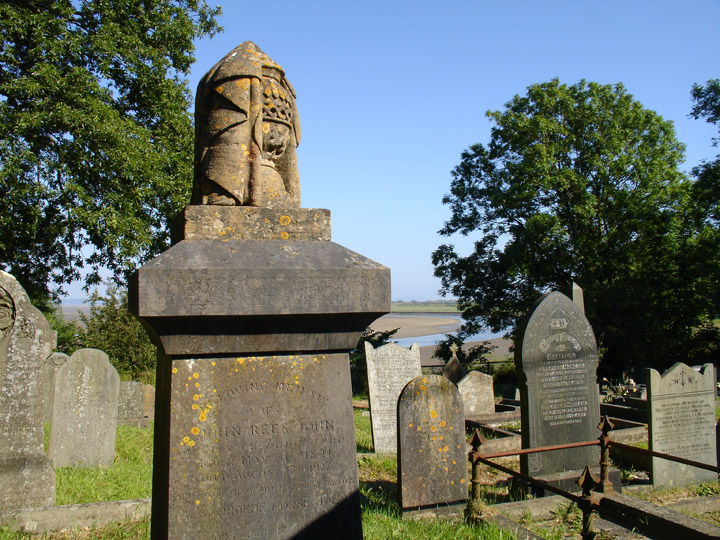
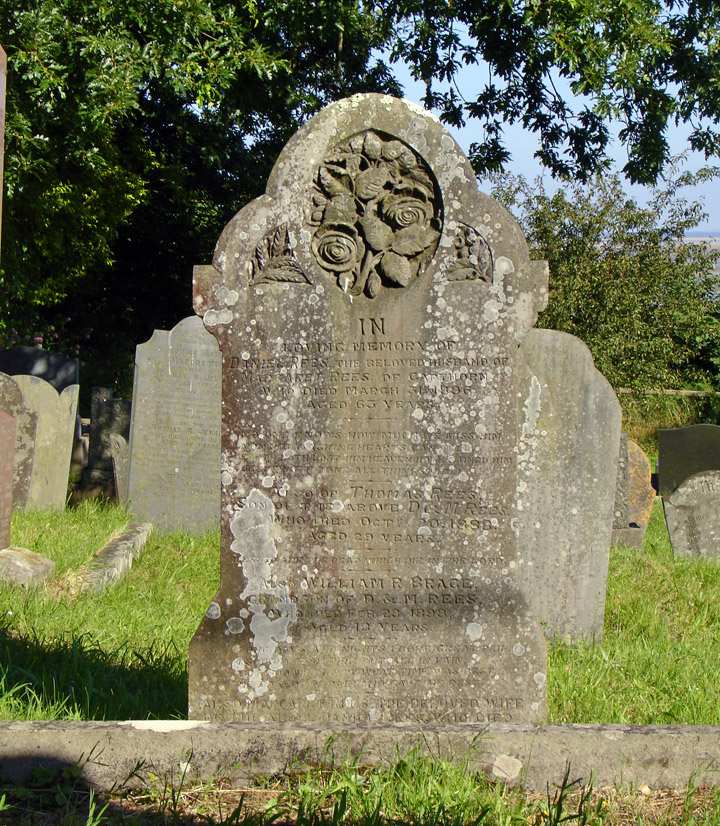
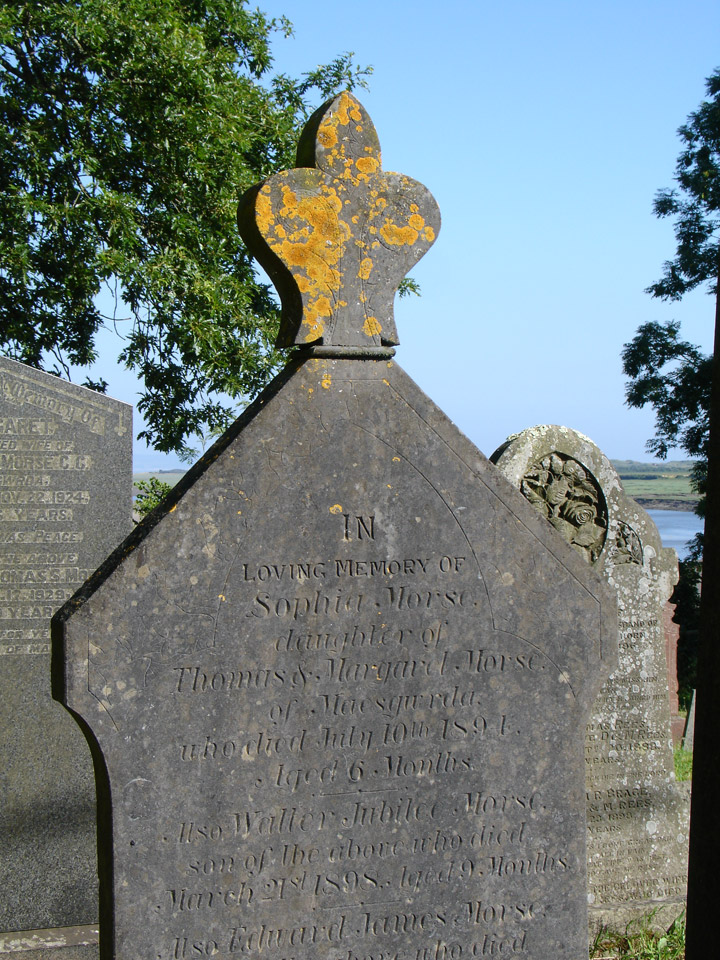
The Boat House of Dylan Thomas
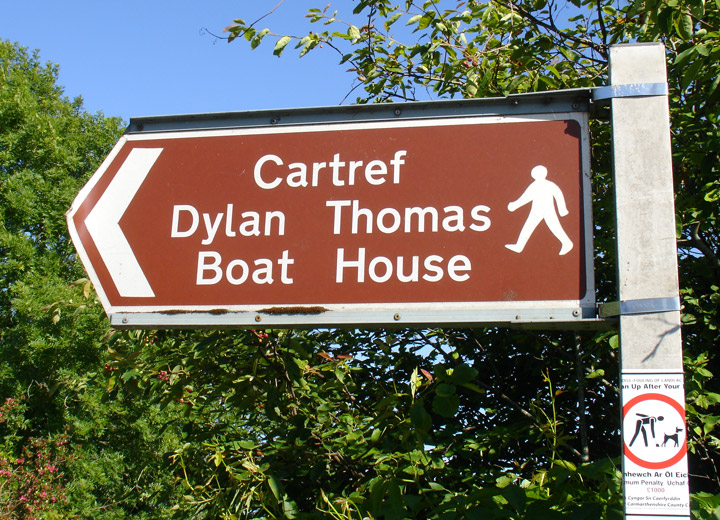
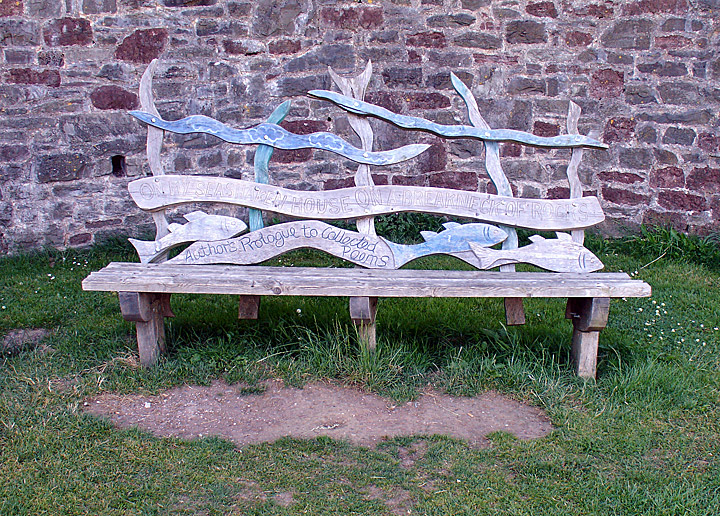
Thomas, Dylan Marlais
(1914-1953), Welsh poet, short-story writer, and playwright, renowned for the unique brilliance of his verbal imagery and for his celebration of natural beauty. Thomas was born in Swansea, Wales, on October 27, 1914. After grammar school he moved to London where, in 1934, his first book of poetry, Eighteen Poems, was published. At this early age, he revealed unusual power in the use of poetic diction and imagery; the volume won him immediate critical acclaim. Thematically, these poems and virtually all that followed seem obscure because they contain elements of surrealism and personal fantasy. But the freshness and vitality of Thomas's language draw the reader into the poems and reveal the universality of the experiences with which they are concerned. This introspective tendency is less apparent in Deaths and Entrances (1946) and In Country Sleep (1951), which are generally regarded as containing his finest writing. Thomas's other works include Twenty-five Poems (1936) and The Map of Love (1939), containing both poetry and prose. A Portrait of the Artist as a Young Dog (1940) is a group of autobiographical sketches, and Adventures in the Skin Trade (published posthumously, 1954) contains an unfinished novel and other prose pieces. During World War II (1939-1945) Thomas wrote scripts for documentary motion pictures. After the war Thomas was a literary commentator for BBC radio. Under Milk Wood (published posthumously, 1954), a play for voices, was originally written for radiobroadcast; when Thomas read it for its first public performance in Cambridge, Massachusetts, in 1953, it was still unfinished. The work became his most famous piece; it evokes the lives of the inhabitants of Llareggub, a small, Welsh seaside town. Noted for his readings of his own verse, Thomas became legendary in the United States, where he gave many lecture tours and gained a wide following. Nevertheless, his last years were shadowed by an increasingly tragic view of his own tempestuous life. His death in New York City on November 9, 1953, was brought on by alcoholism.Text from Microsoft Encarta

Dylan Thomas writing shed
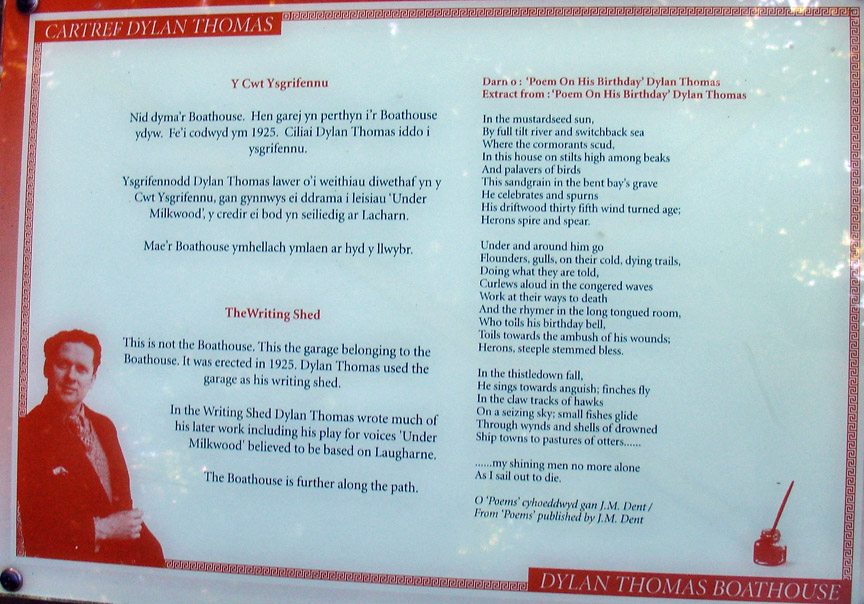
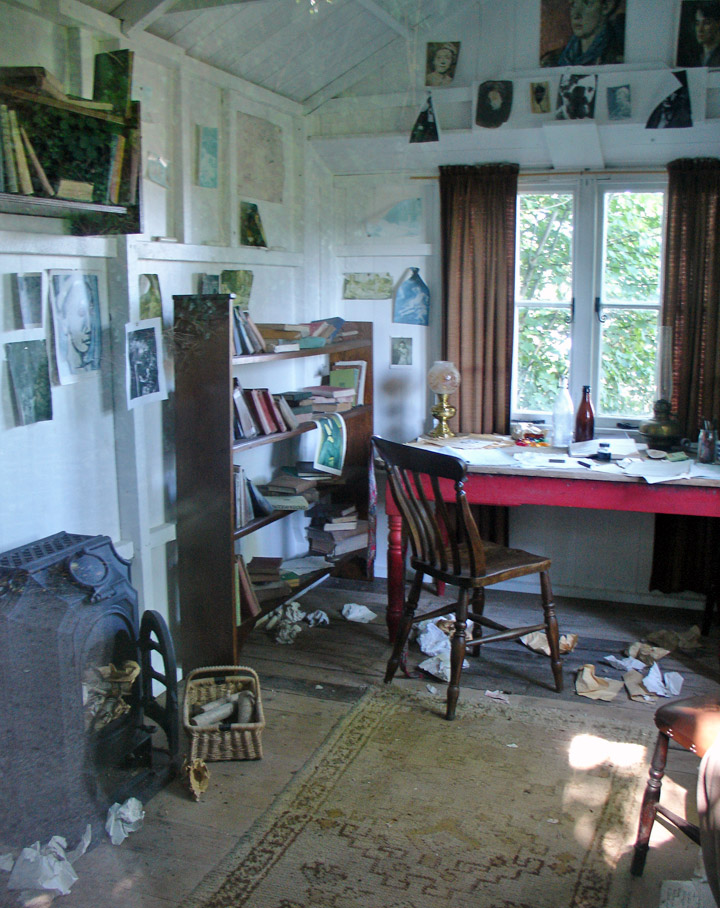
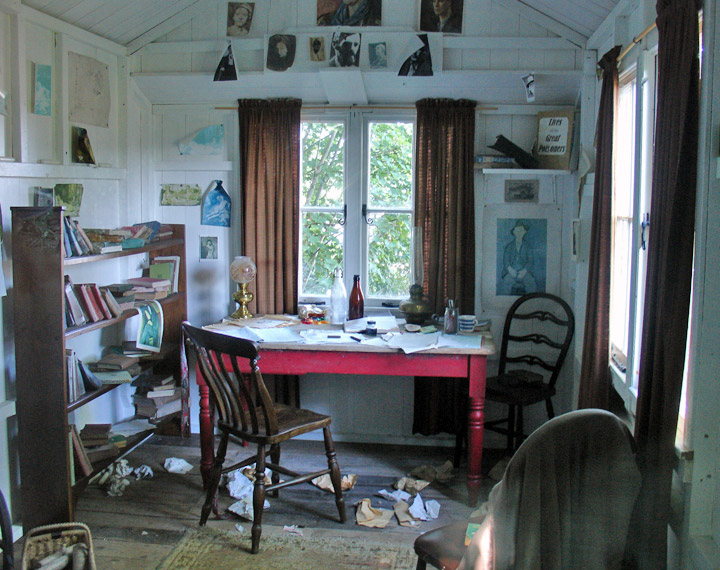

the boat house
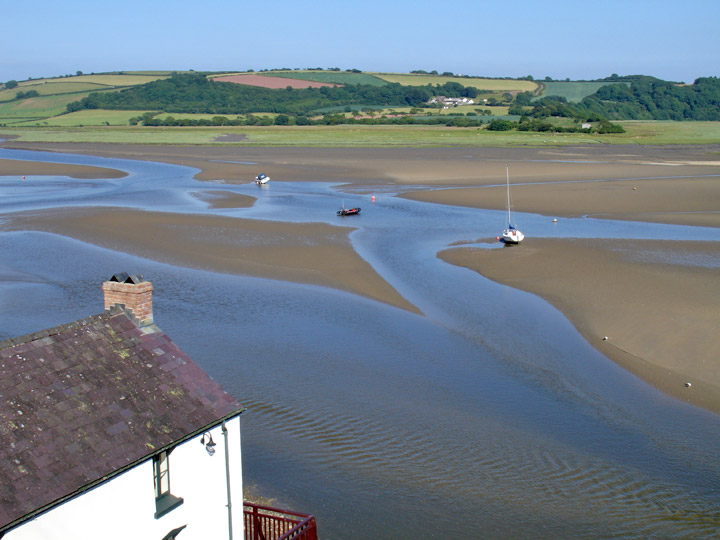
the view
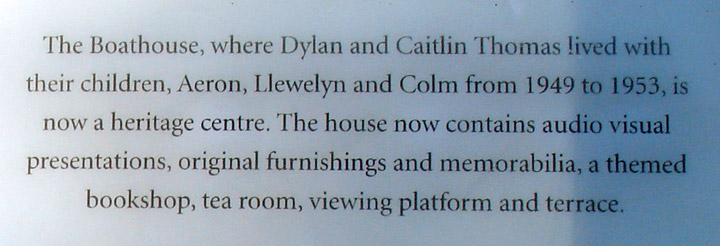
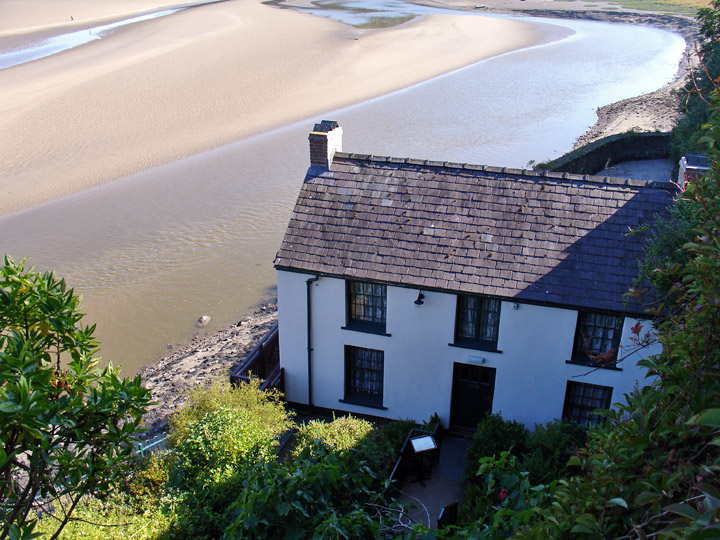
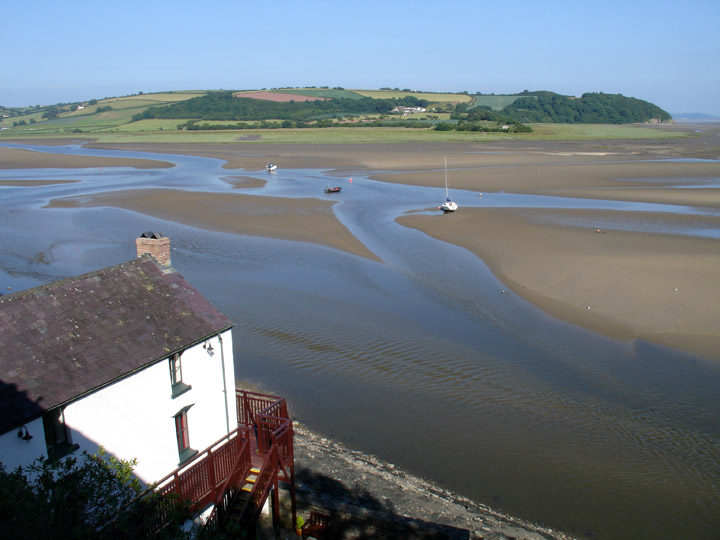
view at low tide

in a cemetery outside of the town,
the white wooden cross in the
background center
marks the grave of Dylan and Caitlin Thomas
Return to Wales Elderhostel page